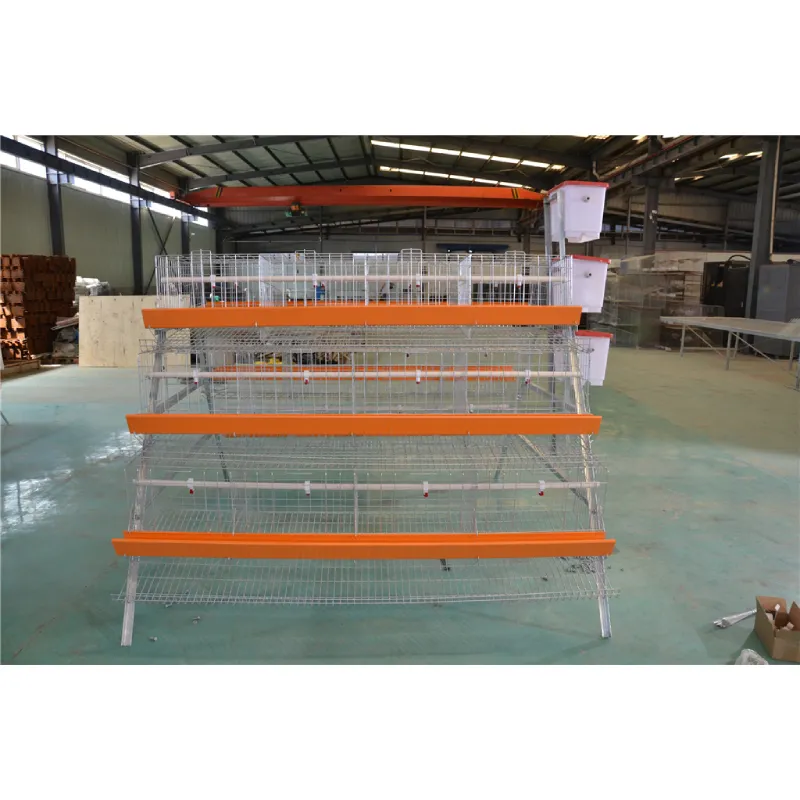Efficient Design and Use of Poultry Transport Cages for Optimal Livestock Care
Aug . 20, 2024 23:04 Back to list
Efficient Design and Use of Poultry Transport Cages for Optimal Livestock Care
The Importance of Poultry Transport Cages in the Poultry Industry
Poultry transport cages play a critical role in the poultry industry, ensuring the safe and humane transportation of chicks, hens, and broilers from farms to processing plants or retail markets. The design and quality of these cages are essential not only for the welfare of the animals but also for the efficiency of the supply chain. As the demand for poultry products continues to rise globally, the importance of effective transport solutions has never been more significant.
One of the primary functions of poultry transport cages is to provide a safe and comfortable environment for birds during transit. These cages are designed to minimize stress and prevent injury, which can occur if birds are left to roam freely in a vehicle during transportation. The cages are typically constructed from durable materials and feature proper ventilation to ensure air circulation. This design helps maintain an appropriate temperature and reduces the incidence of heat stress, which can be detrimental to the health of the poultry.
Moreover, poultry transport cages come in various sizes and designs to accommodate different types of birds and transport conditions
. For example, cages for chicks differ significantly from those used for adult birds; they must be spacious enough to allow movement but not so large that the birds are at risk of injury. Additionally, stackable cages are common; they allow for efficient use of space inside transport vehicles, maximizing the number of birds that can be moved at one time without compromising their safety.poultry transport cages

The humane treatment of poultry during transport has also become a focal point for animal welfare organizations and regulatory bodies. Many countries have established strict guidelines and standards that manufacturers and transporters must adhere to in order to ensure animal welfare. The use of high-quality transport cages that meet these standards has become increasingly important. Compliance with these regulations not only helps protect the birds but also enhances the reputation of poultry producers who prioritize animal welfare.
In addition to ensuring the welfare of the birds, poultry transport cages also contribute to the overall efficiency of the poultry supply chain. Properly designed cages facilitate smoother loading and unloading processes, which can significantly reduce the time birds spend in transit. This efficiency is particularly important in an industry where time is a critical factor. Reducing transit times not only helps maintain the health and quality of the poultry but also optimizes logistics, ultimately lowering costs for producers and consumers alike.
Furthermore, with the advent of new technologies, the design of poultry transport cages is evolving. Innovations such as tracking systems are being integrated into the cages, allowing for real-time monitoring during transportation. This technology can provide valuable data on the conditions of the birds during transit, enabling producers to respond quickly to any issues that may arise, such as temperature fluctuations or overcrowding.
In conclusion, poultry transport cages are an essential component of the poultry industry. They ensure the safe, humane, and efficient transport of birds, addressing both animal welfare concerns and logistical needs. As the industry continues to grow and evolve, the importance of investing in high-quality transport cages will remain paramount. By prioritizing the welfare of poultry during transport, producers not only meet regulatory standards but also enhance the overall quality of their products, benefiting consumers and the industry alike.
-
Hot Sale 24 & 18 Door Rabbit Cages - Premium Breeding Solutions
NewsJul.25,2025
-
Automatic Feeding Line System Pan Feeder Nipple Drinker - Anping County Yize Metal Products Co., Ltd.
NewsJul.21,2025
-
Automatic Feeding Line System Pan Feeder Nipple Drinker - Anping County Yize Metal Products Co., Ltd.
NewsJul.21,2025
-
Automatic Feeding Line System - Anping Yize | Precision & Nipple
NewsJul.21,2025
-
Automatic Feeding Line System - Anping Yize | Precision & Nipple
NewsJul.21,2025
-
Automatic Feeding Line System-Anping County Yize Metal Products Co., Ltd.|Efficient Feed Distribution&Customized Animal Farming Solutions
NewsJul.21,2025






